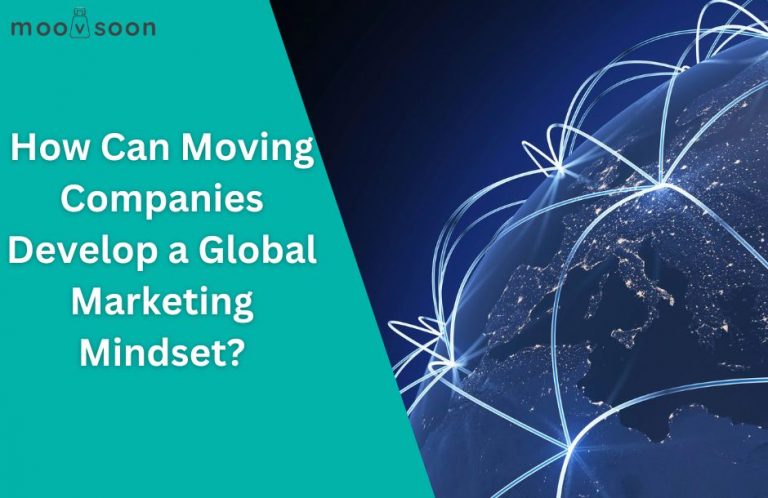
What Are the Pros and Cons of Buying Website Traffic?
In the digital age, the importance of boosting website visibility cannot be overstated. Enhancing strategies through targeted traffic acquisition is a game-changer in maximizing online presence and driving conversions.
With the dynamic landscape of online marketing, understanding diverse traffic sources is paramount. Quality over quantity is key. Selecting sources aligned with audience interests ensures higher engagement and improved ROI.
By delving into the demographics and psychographics of your target audience, you can fine-tune your approach. Buying website traffic becomes not just about numbers but about attracting potential converters. This data-driven strategy is a cornerstone of effective digital marketing.

What does buying website traffic mean?
Acquiring website traffic refers to the practice of paying for visitors to be directed to your website through various online platforms or services. This strategy involves engaging with vendors or digital marketing services that promise an increase in the number of users visiting a site. These services might use pay-per-click (PPC) advertising, social media campaigns, targeted ads, or backlinks from high-traffic sites to drive users to your webpage.
The significance of acquiring website traffic lies in its potential to rapidly increase site visibility and user engagement. It can be particularly useful for new websites or businesses aiming to establish a presence and attract potential customers. However, it’s important to make sure that the traffic is of high quality and relevant to your business goals, as indiscriminate or low-quality traffic might not lead to meaningful interactions or conversions.
Why do businesses buy website traffic?
Businesses often buy website traffic to quickly increase the number of visitors to their site. This strategy can help boost visibility, particularly for new or lesser-known brands, by generating immediate interest and engagement. Buying traffic is also used to improve a website’s standing in search engine rankings, as more visits can signal relevance to search algorithms.
Additionally, purchased traffic can assist in testing the effectiveness of a website’s design or the appeal of its content, allowing businesses to make data-driven improvements. While this approach can offer short-term benefits, it’s essential for companies to balance purchased traffic with strategies that cultivate organic growth and genuine user engagement.
How does paid traffic work for websites?
Paid traffic for websites involves purchasing visits from external sources to increase site visibility and visitor numbers. This approach typically utilizes platforms like Google Ads or social media advertising, where businesses bid on keywords or audience segments to display their ads. Once a user clicks on these ads, they are redirected to the website, generating paid traffic.
The mechanism works through targeted campaigns, allowing advertisers to choose specific demographics, interests, or behaviors to reach their ideal audience. This targeting guarantees that the paid traffic is more likely to convert into sales or leads, as it aligns with the interests of potential customers. Additionally, paid traffic offers immediate results, making it a popular choice for businesses seeking quick boosts in web traffic.
Companies can benefit from analytics tools provided by these advertising platforms to monitor performance metrics, such as click-through rates and conversion rates. This data helps in adjusting strategies for better outcomes. Nevertheless, while paid traffic can be effective, it requires continuous monitoring and optimization to secure a return on investment and avoid budget overspending.
What are the steps to buy website traffic?
Are you wondering how to buy website traffic effectively? Follow these steps for a successful traffic acquisition strategy.
- Identify Your Target Audience: Understand the demographics, interests, and behaviors of your desired audience to tailor your traffic acquisition efforts.
- Select a Reputable Traffic Provider: Choose a provider with positive reviews and a track record of delivering quality traffic. Consider platforms like Google Ads or Facebook Ads for targeted options.
- Set Your Budget: Determine your budget for traffic acquisition and adjust your strategy accordingly to optimize costs and results.
- Create Compelling Content: Develop engaging advertisements or landing pages that resonate with your target audience to drive traffic effectively.
- Launch Your Campaign: Execute your strategy by launching your traffic acquisition campaign and closely monitor the performance metrics.
- Analyze and Optimize: Utilize analytics tools to track key metrics like visitor numbers, bounce rates, and conversions. Adjust your strategy based on data insights for continuous improvement.
What are common platforms for buying website traffic?
Common platforms for buying website traffic include Google Ads, Facebook Ads, and Taboola. These platforms offer targeted advertising options to reach specific audiences. Google Ads allows businesses to display ads across Google’s search network and partner sites, while Facebook Ads leverages user data for precise targeting on its social media platform.
Taboola focuses on native advertising, promoting content on high-traffic websites. Each platform offers analytics to track campaign performance, helping businesses optimize their strategies for better results.
How do traffic providers ensure relevant visitors?
Traffic providers use several strategies to guarantee relevant visitors. They often employ advanced targeting techniques, such as demographic and geographic filtering, to match the website’s audience profile.
Behavioral data analysis helps identify users likely to engage with the content. Providers may also use contextual advertising, guaranteeing ads are placed on similar interest websites, thereby attracting visitors with aligned interests.
Additionally, partnerships with high-quality websites guarantee traffic originates from credible sources, enhancing relevance and engagement. These methods collectively aim to deliver visitors who are genuinely interested in the site’s offerings.
How to choose a reliable traffic provider?
When selecting a reliable traffic provider, prioritize their reputation and client reviews. Evaluate their transparency regarding traffic sources and make sure they offer targeted traffic relevant to your niche. Check if they provide detailed analytics and performance metrics to track effectiveness.
It’s important to verify their adherence to ethical practices, avoiding fraudulent or low-quality traffic. Look for providers that offer flexible packages and customer support. Comparing multiple providers and requesting trial packages can also help you make an informed decision.
What are the advantages of buying website traffic?
What are the advantages of buying website traffic? Here is a breakdown of the benefits businesses can reap by purchasing website traffic:
- Immediate Increase in Visitors: Buying website traffic offers an instant boost in visitors, especially beneficial for new websites aiming to establish a strong online presence swiftly.
- Higher Conversion Rates: Targeted traffic purchases can lead to improved conversion rates as businesses can reach interested users that align with their niche, resulting in more effective lead generation and increased sales.
- Testing and Optimization: Purchasing traffic allows businesses to gather valuable data on user behavior and preferences, enabling them to optimize their marketing strategies and enhance user experience through data-driven decisions.
- Enhanced Visibility: By investing in website traffic, businesses can increase their online visibility, attract potential customers who may not have discovered the site organically, and improve their overall reach.
- Improved Marketing Approach: Businesses can use purchased traffic to analyze user engagement and refine their marketing tactics, helping them identify successful strategies and areas that need improvement for better results.
Why does paid traffic produce quicker results than SEO?
Paid traffic produces faster results than SEO because it allows immediate visibility and audience targeting. When you pay for traffic, your website appears in sponsored ad slots, reaching users as soon as the campaign starts. In contrast, SEO requires time to build organic rankings through content optimization and backlinks.
This process can take months to impact search engine results notably. Paid traffic offers precise targeting through demographics, interests, and behaviors, ensuring that your ads reach the right audience instantly, leading to faster engagement and conversions.
Can paid traffic help find a receptive audience?
Paid traffic helps identify a receptive audience by targeting specific demographics, interests, and behaviors. Metrics like click-through rates and engagement levels provide insights for refining campaigns. This targeted approach maximizes marketing efficiency, focusing on resonating with the right individuals.
How does buying traffic extend your website’s reach?
Buying website traffic can significantly expand your website’s reach by quickly increasing the number of visitors, thereby enhancing visibility and brand awareness. This process involves purchasing visits from users who are directed to your site through various channels, such as social media ads or display networks.
By targeting specific demographics or interests, you can attract relevant audiences who are more likely to engage with your content. Consequently, enhanced traffic can lead to higher search engine rankings, as search engines often interpret this as a sign of your site’s relevance and popularity. However, it’s crucial to ensure the quality of purchased traffic to avoid high bounce rates and maintain engagement levels.
What are the disadvantages of buying website traffic?
What are the disadvantages of buying website traffic? Discover the key drawbacks below:
- Low Engagement Levels: Purchased traffic often lacks genuine interest, leading to minimal interaction and low conversion rates. This can result in poor returns on investment and hinder business growth.
- Negative Impact on SEO: Artificial traffic influxes can harm a website’s search engine optimization efforts. Search engines prioritize organic traffic and user engagement, which might lead to penalties and lower search rankings.
- Risk of Fraudulent Activity: Some vendors provide fake traffic through bots or non-human visitors, inflating numbers without actual engagement. This not only wastes marketing budgets but also distorts analytics and decision-making.
- Lack of Sustainable Audience Growth: Relying on bought traffic detracts from building a loyal audience. Devoting resources to organic growth strategies and quality content creation is typically more effective in the long term.
- Short-Term Gain, Long-Term Loss: While purchased traffic may offer a quick boost, its disadvantages, including low engagement, SEO issues, fraudulent activity, and hindrance to audience growth, can undermine long-term success.
Why is paid traffic a short-term investment?
Paid traffic provides immediate visibility and traffic boost, but it lacks longevity. Once campaigns cease, traffic declines, necessitating continuous funding. Sustainable growth demands a focus on organic traffic to avoid dependency on paid strategies.
How can the cost of buying traffic add up?
Buying website traffic can become costly over time, especially if not managed carefully. Initially, purchasing traffic may seem like a quick boost to website visits, but the expenses can accumulate rapidly. Each click or visit typically incurs a fee, and if the traffic doesn’t convert into sales or leads, the investment might not yield a return.
Additionally, consistent spending is often required to maintain traffic levels, leading to a continuous outflow of funds. It’s essential to monitor conversion rates and set a clear budget to prevent excessive spending.
What are clickbait strategies, and why should they be avoided?
Clickbait strategies can increase bounce rates by up to 60%, leading users to quickly leave your site. This undermines long-term goals like conversions. Authentic engagement through quality content keeps visitors returning and builds brand trust.
How to avoid scams when buying website traffic?
To avoid scams when buying website traffic, focus on identifying red flags and conducting thorough research. Start by evaluating the seller’s reputation through verifiable testimonials and online presence.
Check for transparent pricing structures, realistic guarantees, and quality traffic alignment with your target audience using tools like Google Analytics. Testing services with smaller purchases before larger investments can help verify the provider’s legitimacy and avoid scams.
Conclusion
Summarizing essential insights, purchasing website traffic requires a tailored approach aligned with business goals. Quality over quantity is key to leveraging paid traffic alongside organic strategies for sustainable growth.
Highlighting the impact of targeted traffic, quality vendors, and monitoring sources, data-driven decisions drive successful outcomes. Balancing visibility with engagement fosters a holistic marketing strategy for long-term success.
Empower your marketing efforts by integrating purchased traffic judiciously. Stay informed, prioritize quality metrics, and adapt strategies for optimal results. How will you harness purchased traffic to elevate your online presence strategically?



